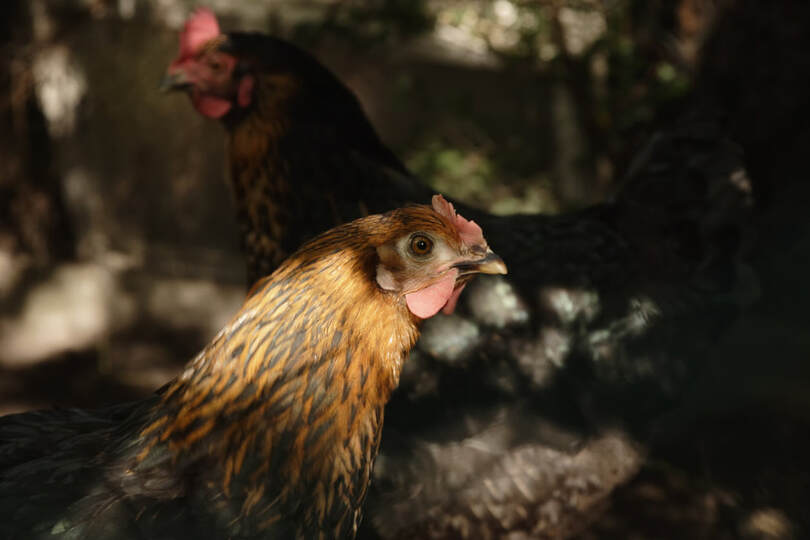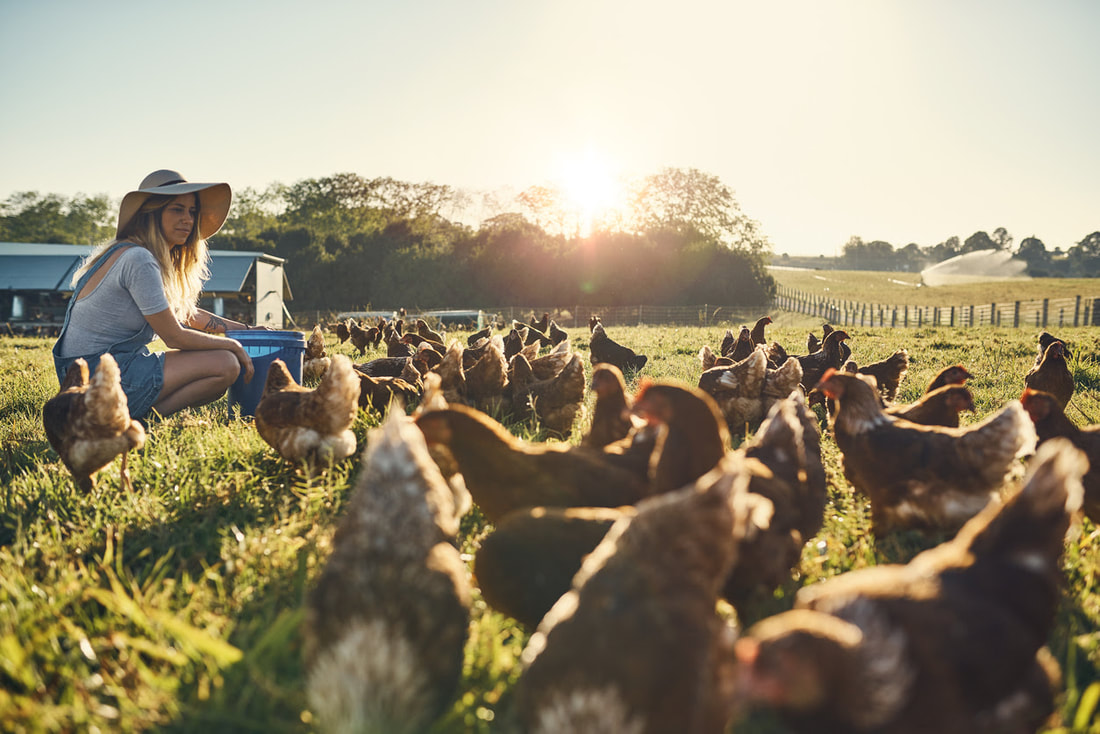|
Summer is in full swing. Temperatures are in the 90s, and people are looking for shade. What better time to chill with your chickens in the backyard? Just, make sure your chickens have ways to stay cool, too.
Dehydration Dehydration is the first sign of possible heat-related problems. Just like humans, chickens' electrolytes become unbalanced when dehydrated. It is a good idea to add electrolytes to their water to lessen the impact of dehydration. See here for a recommended resource about heat stress. Make sure their water is cold. Cold water helps regulate a chicken's temperature so keep it readily available during hot weather. You may need to change the water periodically to keep it cold. To keep chickens hydrated, place berries in water and freeze overnight. Set the frozen treats out the next day. The chickens will peck at the ice and berries, creating another way to keep them hydrated. Cooling Make sure the chickens have a shady place to rest. If possible, construct their coop to provide ventilation. You could consider placing a fan in their coop, but only operate it in the daytime when you are at home. Reduce the bedding in the coop to a minimum. Thick bedding acts as an insulator, holding heat in the coop. You can mist the chickens and the coop. If misting isn't enough, you can wet down the coop and create cold water puddles for the chickens to walk through to cool off. Activity Leave the chickens alone as much as possible. Chickens generate heat when they interact with other chickens and with humans. In close quarters that could significantly increase the surrounding temperature. Cut back on hard to digest foods. Chickens generate heat when they digest their food. The harder their system works the more heat it generates. See if your chickens like to swim. Fill a kiddie pool with an inch or two of cold water. Watch them jump in, or not. As you look for ways to stay cool when the temperatures rise, remember these tips for keeping your chickens cool.
2 Comments
It's hard to imagine a world without chickens. Thankfully, we don't have to. Have you ever wondered about the history of the chicken? They don't really look like other birds, and they can't fly long distances, but it seems to us that they have always been around. Here are a few facts about how the chicken we know today came to be.
Domestication According to the Pennsylvania State University extension website, the chicken belongs to the genus Gallus of the family Phasianidae. Gallus domesticus is the classification of the domestic chicken. Its ancestry can be traced back to wild jungle fowl from Southeast Asia; specifically, the Red jungle fowl (Gallus gallus or Gallus bankiva). It is believed that chickens were first domesticated at least as early as 2000 B.C. The chicken of today came to be after many centuries of careful selection and breeding. Introduction to the United States The Smithsonian website states that archeologists believe that the domesticated chicken was first brought to the New World by Polynesians who reached South America a century or so before the arrival of Christopher Columbus. Valued particularly as a source of eggs, they played a minor role in the American diet until well into the 20th century. The breakthrough that turned chicken production from a casual enterprise to the broiler industry of today, came with the fortification of feed with vitamins and antibiotics. Common Breeds Some of the most popular breeds of chicken in the US include the Plymouth Rock, Rhode Island Red, Ameraucana, Orpington, and the Golden Laced Wyandotte. All of these are egg-laying breeds. Urban Chicken Farming In rural areas of the country, raising chickens has always been a common source of fresh eggs and meat. The backyard chicken craze that is so popular in urban centers today, began as more people want to take part in home-grown agriculture, the local-food movement and the desire for really fresh eggs. Grassroots movements have successfully lobbied to overturn city ordinances that outlaw backyard poultry farming. Because there is worry about noise, odor, and public health, some cities have adopted a limit as to how many chickens can be kept per household. The backyard chicken farm is here to stay because not only do chickens provide a prized commodity, they also make wonderful pets. So, add to the urban craze, and don't forget to treat those backyard chicken pets right by supplementing diets with Popworms! Eco and Popworms! Pro today! |
PopWorms!®
|
|
Site Map
|
Products
Dry Products
PopWorms!® ECO Popworms!® ECO Bulk PopWorms!® PRO Live Products PopWorms!® LIVE PopWorms!® Leftovers |
Shipping
Site-wide
Free Shipping Over $25 |


 RSS Feed
RSS Feed


